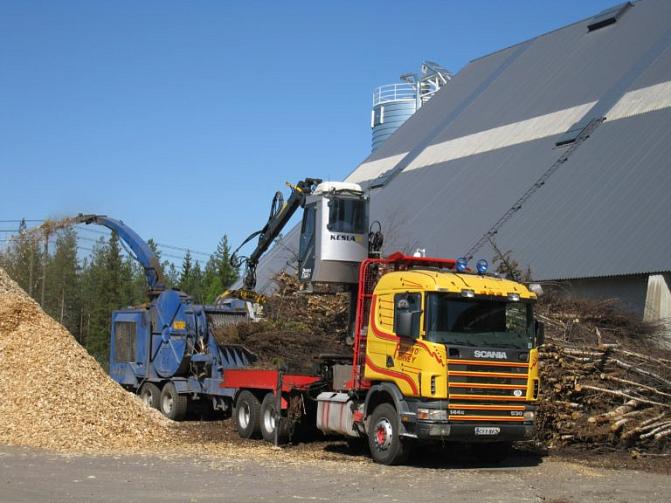Side streams resulting from the felling of commercial timber (i.e. logging residues and stumps) are used as raw material for forest chips, together with small-sized trees harvested during the improvement of young stands and thinnings.
Part of the logging residues, stumps and roundwood not suitable for use as commercial timber remaining in regeneration felling areas are harvested and used in energy production. The availability of fractions generated as by-products of regeneration felling depends largely on the use of domestic logs in forest industries, but also on the willingness of forest owners to sell.
Due to the small size of the trees, felling income on the improvement of young stands and first thinnings is usually low, and small-sized trees may be sold as energy wood to improve the profitability of silviculture. Small-sized trees can be harvested, independent of the use of domestic wood in forest industries. Small-sized trees are either harvested as stems (i.e. without branches) or as whole trees with branches. Low volumes of forest chips can also be acquired from clearing the sides of roads and plots of land.



